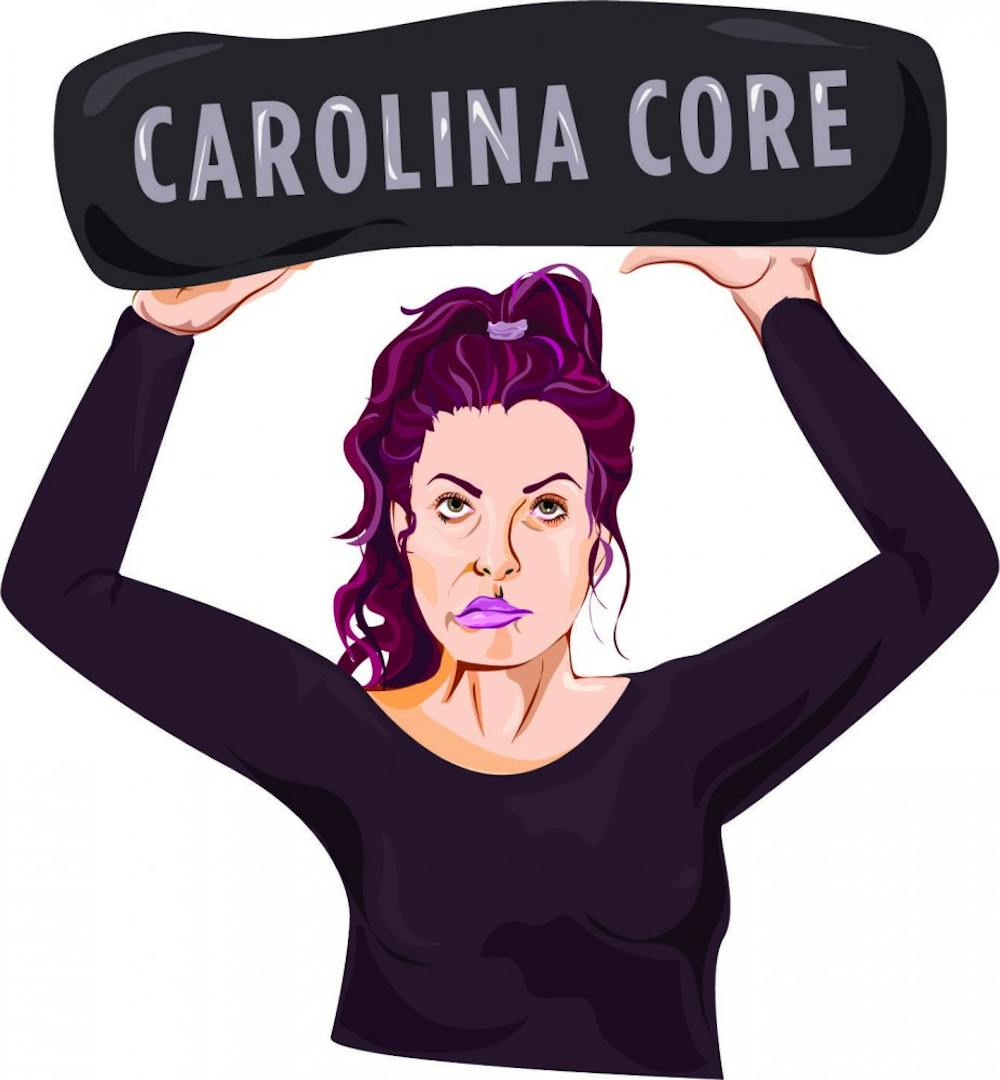The concept for this article happened something like this: “You know what every undergrad at USC has in common? Carolina Core. Let’s interview a bunch of them and then write about how it’s screwing them over.”
Looking back, I fell prey to a little logical fallacy called “begging the question.” I designed my interviews around the assumption that students would have some chief complaint, or that they’d been waiting for the opportunity to unload their dissatisfaction on someone. In short, I planned an entire searing exposé on the evils of higher education without talking to a single student.
When I started meeting with students, most interviews lasted less than 30 seconds. Dozens of busy-but-friendly undergrads seemed totally prepared to talk to me, but didn’t have any complaints to hand over. “Sorry,” one junior laughed. “I really can’t think of anything. Good luck with that article, though!”
This isn’t to say that students expressed deep fondness for the core curriculum. On the contrary—when I mentioned the phrase “Carolina Core,” most students responded with a wry smile, or an exaggerated eye-roll. From what I gathered, at best, the Core provides a welcome distraction from fulfilling major requirements; at worst, students felt that their frustration with Carolina Core was just a normal part of USC life.
“It’s almost a given that students take a certain number of courses that they don’t care about,” one junior English major said. “It’s just part of the college experience.”
The only students who consistently responded with a desire to see changes in Carolina Core policy were the overworked, haggard STEM students—biochemistry and engineering majors who felt that taking six credit hours of foreign language put an unfair burden on their overloaded schedules.
“I see the benefit of knowing a language,” one sophomore biology major said, “but there’s no way that six credit hours will help me reach fluency. At that elementary level, it’s almost a waste of time.”
Understandable, coming from those veterans of organic chemistry. But what about the rest of the student population? Some quick quantitative data: The University of South Carolina serves roughly 25,000 undergraduates. The percentage of students from out-of-state or international programs grows every year, along with the size of the freshman class. Within the university, there are 19 colleges from which students can earn degrees; each of those programs offers complex majors, minors, cognates, double major options, and dual degrees. And all of these students put in a minimum of 31 credit hours — an entire semester and then some — to complete the Carolina Core requirements.
I’m not a statistics major, but it struck me as odd that a sizable sampling of these students—without boundaries of major, age, gender, race, or campus involvement — didn’t have concrete complaints about the current system.
But then again, it isn’t that surprising. Unless you’ve experienced a complete horror story (like accidentally signing up for an ocean studies course meant for environmental majors), chances are the minor annoyances caused by university policies such as Carolina Core get swept under the rug. Incoming freshmen are routinely told by upperclassmen to “knock out” core requirements their first few semesters, as though core classes were pesky minions in a video game.
“It’s impossible for students to get the whole picture,” one transfer student said. “When you’re deciding where to go to college, the degree completion set-up usually isn’t a consideration. It’s just kind of assumed that most universities approach it the same way.”
The provost’s website talks about Carolina Core as “courses in the liberal arts and sciences that support subsequent study in the program major and in beyond-the-classroom learning activities.” These classes are supposed to teach universal skills, like “communication, analytical reasoning and problem-solving, scientific literacy, information literacy and the arts.”
Parsing through the buzzwords, it’s clear that the university believes that a well-rounded student makes for a successful employee and citizen. They maintain that even areas of study like pure science and fine arts, which have few real-world applications for most students, are inherently valuable. These views certainly aren’t groundbreaking, and they align with the current standard of public, collegiate education. But how does this short, snappy mission statement get applied in actual classrooms?
I spoke with a professor who helped design the curriculum for SAEL 200, a class that most students at USC end up taking. It fulfills two separate overlay requirements—the Values, Ethics, and Social Responsibility requirement and the spoken component of the Effective, Engaged, and Persuasive Communication requirement. Here’s what he had to say:
There are lots of academic requirements that schools, departments, courses, and teachers have to meet. Most of them are pretty arbitrary. I don’t mean that they’re senseless, but they aren’t obvious, objective, precise standards. All of the requirements for the SAEL course are listed in the course objectives on the syllabus, verbatim. Those objectives are written by the people who design the course, and they’re given to the speech department and the values/ethics committee. Those people then compare the course objectives to the requirements for all courses that count as speech or values courses. Then, either the language of the objectives gets revised, or the course is approved. There are no mechanisms in place to detect how professors interpret those objectives other than one yearly visit on a day that the professor decides, by someone that the professor knows.
What I gathered from this was that no one on the chain of command—from the Department of Education to a Ph.D. student teaching English 101 — has a clear standard of what meets course objectives.
On an individual level, it’s hard for students to see the big picture. If you and your friend both take SAEL 200 and get different assignments, semantically opposed professors, and classroom environments that are like day and night, who can say if the course objectives truly have been filled in either case? In application, a student caters to their professor’s style of grading, receives the grade they deserve, and graduates with a diploma that guarantees certain skills learned in core courses.
“[Carolina Core] is a perfect set-up for freshmen who aren’t sure what they want to do,” said one orientation leader. “They get to try out a bunch of learning methods and subjects without feeling like they’re wasting their time. But once you’re invested in a major, students put off taking their Core classes because they’ve found a classroom style that works for them, and they don’t want to risk screwing it up.”
So what do you do if you’re a student, stuck in courses that you’re not interested in, fulfilling vague requirements, and feeling ambiguous about your education? Stay informed. Ask your favorite professors if they’re teaching core courses. Talk to advisors, peers, and upperclassmen who have taken courses you’re considering. If you’re worried about spending a semester on a subject that you hate, USC has started to branch out and offer major-specific classes that fill core requirements, such as Spanish for Business Majors.
Like with many large institutions, Carolina Core isn’t an evil plot to keep students giving their hard-earned money to the university. It’s rooted in good intentions, passed down by benign powers, and ultimately may or may not contribute to a well-rounded education. Maybe Carolina Core didn’t need an exposé, but if this article helps make more students aware of their options, then it’ll have done its job.



